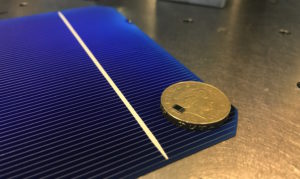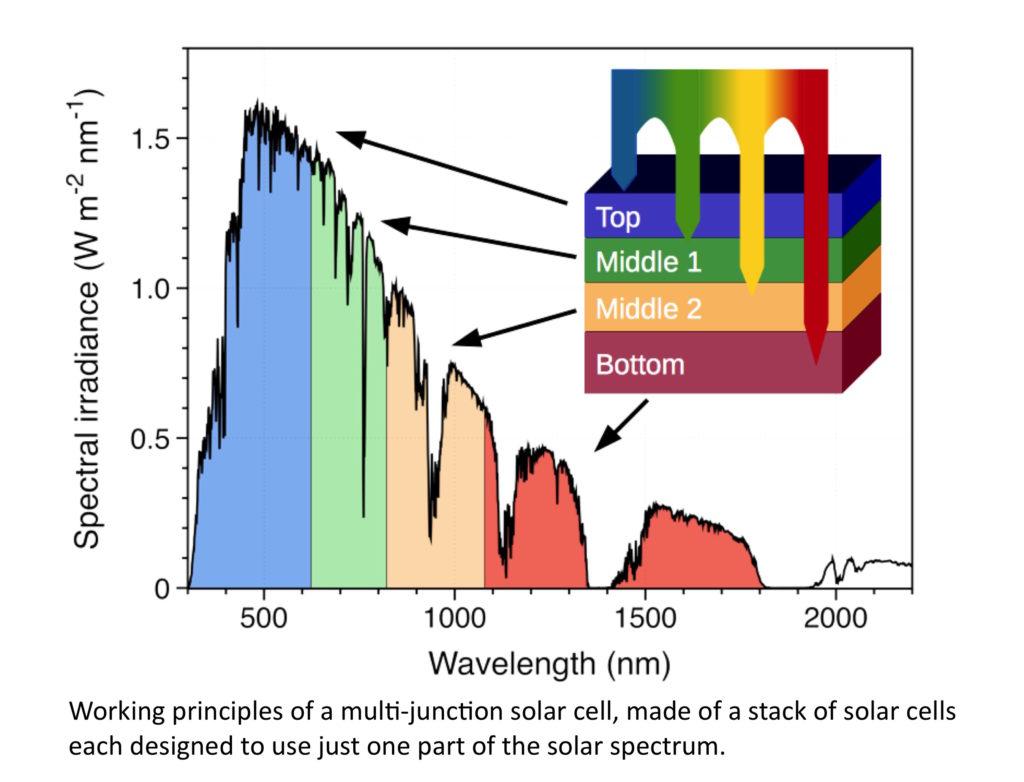Making use of the energy of the Sun is not easy… well, that is not completely true. Human beings use that energy every second of our lives, at least indirectly. Thanks to it, we have a mild weather on planet Earth, plants grow and so do the animals. The world we know is the way it is thanks to the energy provided by the Sun. So, I reformulate the problem: making use of the energy of the Sun to produce electricity is not easy.
 Electricity is a natural phenomenon but it does not exist in the ever-increasing amounts that the modern world needs. Since its discovery and the beginning of its exploitation during the second half of the XIX century, we have come up with numerous ways of producing it and even more of using it. The latter are well known by everyone, but the former are not as many and neither that well known. Most of them rely on having a fluid moving a turbine. What fluid moves and why it does it is what differentiate one another. For example, in hydroelectric plants, the fluid is just water stored in a dam that falls due to gravity and moves the turbine in the process. In wind farms, it is wind that moves the blades of the turbine. On the other hand, thermal power stations use vapour for the same purpose. That vapour can be generated burning coal, oil, gas, using the internal heat of the Earth or the heat generated by the fission of radiative elements, like in nuclear power plants. The result is the same: a fluid (vapour) moving a turbine. This is the same principle of solar thermal power plants, where vapour is produced using the heat from the Sun light.
Electricity is a natural phenomenon but it does not exist in the ever-increasing amounts that the modern world needs. Since its discovery and the beginning of its exploitation during the second half of the XIX century, we have come up with numerous ways of producing it and even more of using it. The latter are well known by everyone, but the former are not as many and neither that well known. Most of them rely on having a fluid moving a turbine. What fluid moves and why it does it is what differentiate one another. For example, in hydroelectric plants, the fluid is just water stored in a dam that falls due to gravity and moves the turbine in the process. In wind farms, it is wind that moves the blades of the turbine. On the other hand, thermal power stations use vapour for the same purpose. That vapour can be generated burning coal, oil, gas, using the internal heat of the Earth or the heat generated by the fission of radiative elements, like in nuclear power plants. The result is the same: a fluid (vapour) moving a turbine. This is the same principle of solar thermal power plants, where vapour is produced using the heat from the Sun light.
However, there is another way of using the energy of the Sun directly to produce electricity. This is a whole different world. There are no intermediaries, there are no turbines or moving parts, it is quiet and it can be use anywhere. This is the photovoltaic solar energy, which transform sunlight directly into electricity. Very likely, it is somewhat familiar to most of us: dark-bluish solar panels arranged in rows in rooftops or in fields in the countryside; often also on top of traffic signals or street lights; sometimes you can find them in parking lots and shopping centres; and of course, in the good old calculators, featuring a tiny brown-red rectangle that switched off the devices if covered.
The working principle is surprisingly simple. The materials solar panels are made of – and in particular solar cells, which really do the work – are semiconductors. By default, they do not transport electricity well, but they can be encouraged to do so. This can be achieved by connecting them to an external power supply – a battery, for example – or with light. These materials are exactly the same used in the microchips in computers or mobile phones, the sensors in digital cameras or lasers and LEDs for lighting. The most common semiconductor, and the one most solar cells are made of, is silicon, responsible for the technological revolution of the mid XX century. A solar cell is just another semiconductor device designed specifically to collect the electrical current generated when the semiconductor material absorbs light of the appropriate colour.
Obviously, there are caveats and the main responsible of that is the Sun itself.
As we have just discussed, a solar cell will produce electricity as long as it absorbs light of the appropriate colour, that is, with the appropriate energy. The Sun, however, emits light over a very broad range of energies, from ultraviolet light to infrared, across all the rainbow colours. A solar cell cannot absorb light with too little energy and therefore it will not use most of the infrared light to produce electricity. On the other hand, most of the visible and ultraviolet light will be absorbed, but those colours have too much energy and most of it will be wasted as heat. Only light with a very specific colour, characteristic of each semiconductor material, will be absorbed and used entirely to produce electricity. As a consequence of this broad energy range of sunlight, an ideal solar cell could potentially convert into electricity only 33% of it. In practice, real solar cells rarely use more than 20% or 25%.

The scientific community working on this topic is not enthusiastic about these limitations and our efforts are directed towards two goals: reduce the cost of making solar cells, and increase their efficiency. The most successful solution for the latter is, again, quite simple: stack a solar cell on top of each other, the so called multi-junction or tandem solar cells. Each cell in the structure is made with a different semiconductor material optimized to use just one part of the solar spectrum. The light not absorbed by that cell, passes through to the second one, and what this one does not absorb goes to the next, and so on and so forth. With this technique, solar cells using up to 46% of sunlight have been made, although the limits for this technology are much higher. At present, this kind of cells is far too expensive and can only be used in the space industry and with very small sizes in concentration systems, however, the working principles have been proven.
We all expect that our work in new materials, better designs or even completely new ideas will enable to exploit much more of the solar energy in the near future, affordable for everyone. For example, part of the research we do is focused on developing new materials for multi-junction cells using earth abundant, non-toxic and inexpensive elements, at the same time that the high performance is not hindered. Another type of cells are called “hot carrier solar cells” and they try to extract the absorbed energy very fast, before it has time to be converted into heat and wasted. Finally, some of us have accepted that heat will always be produced and work on designing solar cells specific for hybrid solar photovoltaic-thermal systems, capable of producing both electricity and high temperature heat.
All in all, we hope to do our bit and make the World a better place to live in.
By Dr Diego Alonso Álvarez, Postdoctoral researcher, Imperial College London. SRUK London constituency.






